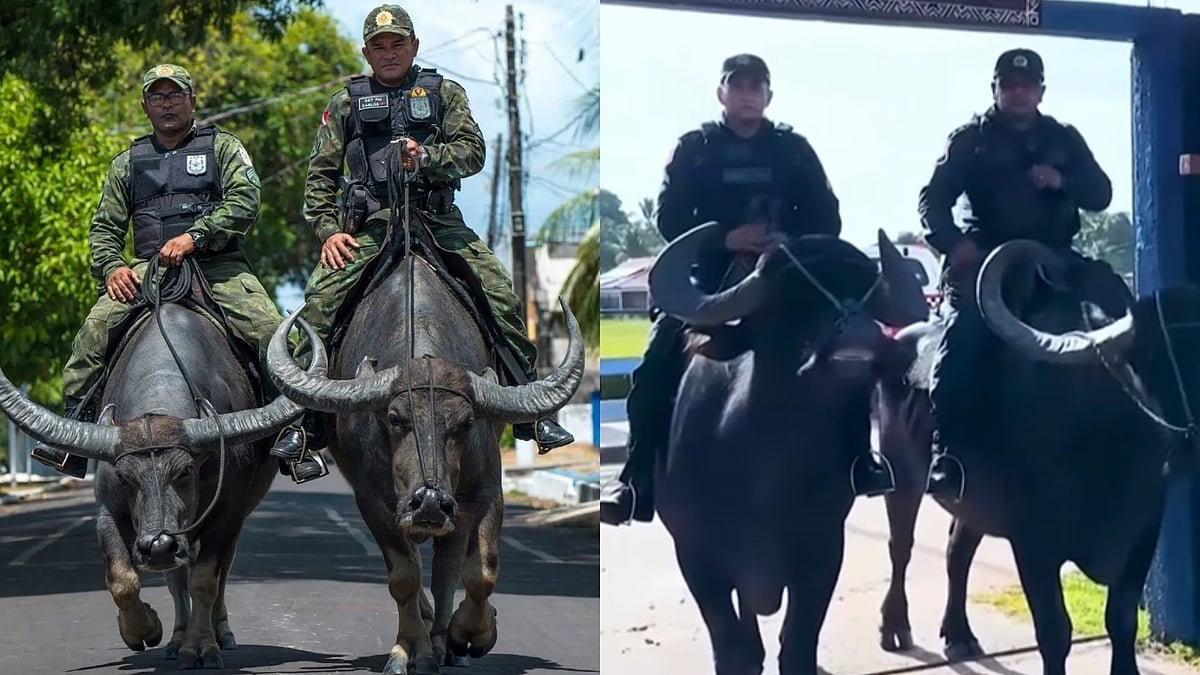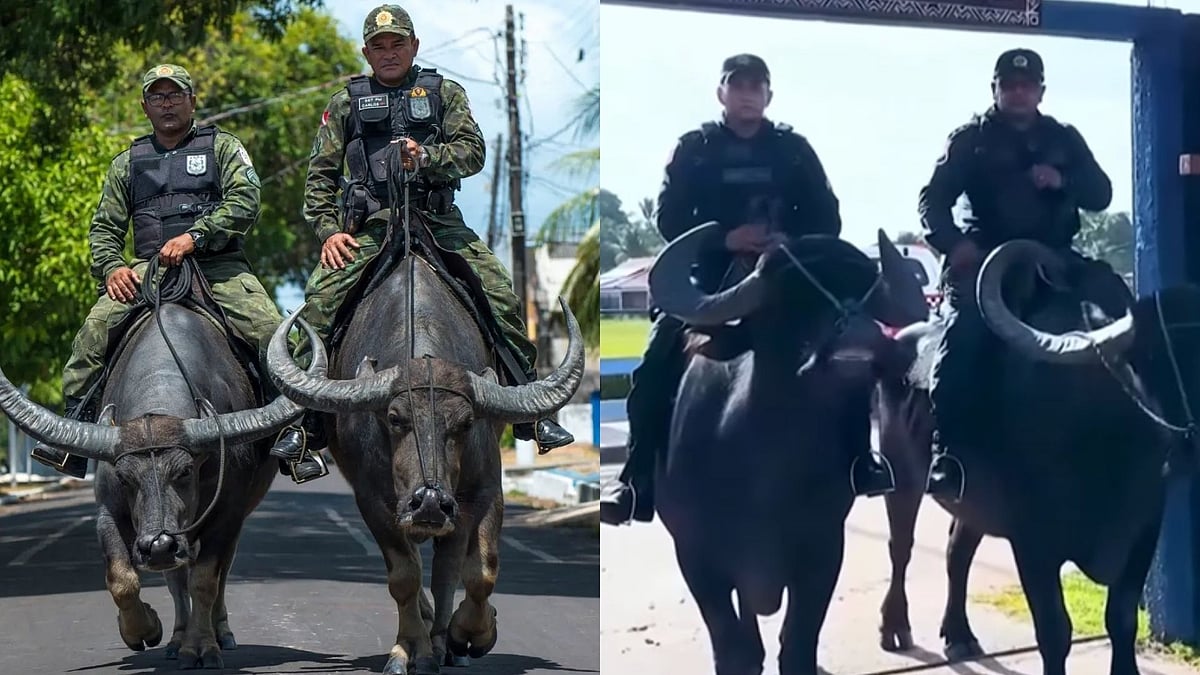In the far north of Brazil lies Marajó- a sprawling island where the mighty Amazon River kisses the Atlantic Ocean. Roughly the size of Switzerland, this region has developed one of the world’s most unusual law enforcement systems, police officers riding Asian water buffaloes instead of patrol cars or horses. A recent Reuters post sparked curiosity as to why officers were seen riding a buffalo.
How Buffaloes became a part of Marajo
Though native to India and parts of Southeast Asia, Asian water buffaloes have thrived on Marajó for more than a century. Their exact origin remains debated- some stories tell of a shipwreck, while others claim they arrived with travelers from French Guiana. What’s undeniable today is their dominance: over 500,000 buffaloes now roam the island, outnumbering the human population.
Perfect for a flooded and muddy landscape
Marajó experiences months of heavy rainfall, turning roads into deep swamps. Patrol vehicles often get stuck, and horses struggle in the slippery mangroves. Buffaloes, however, are built for this environment:
-Their wide hooves prevent them from sinking
-They move quickly through water and mud
-They handle heat and humidity well
This allows police to reach remote communities that would otherwise be inaccessible during the rainy season.
A unique police unit: The “Buffalo Soldiers”
Around three decades ago, the island’s military police created a specialized force known locally as the “Buffalo Soldiers.” Officers undergo training to safely ride these powerful animals, which are fitted with custom saddles and gear. The sight of uniformed officers atop buffaloes has become an iconic symbol of Marajó, and a popular tourist attraction.
More than transportation- Part of culture and economy
On Marajó, buffaloes are everyday helpers. They:
-Pull carts and farm equipment
-Compete in traditional races
-Support the local dairy industry (famous for buffalo mozzarella)
Their role in policing strengthens their cultural importance even further.









